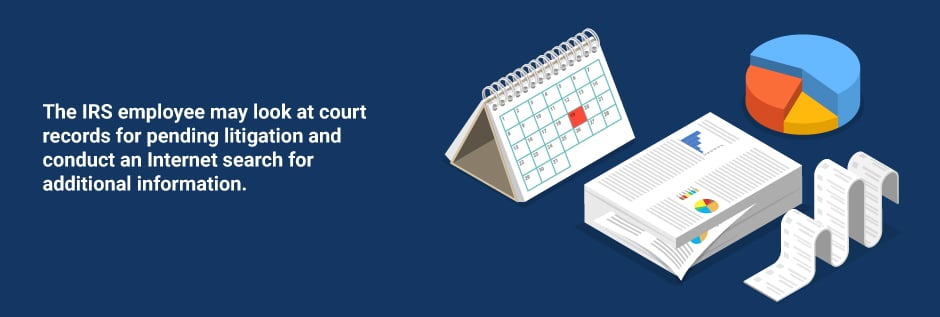The IRS audit process is stressful and overwhelming for business owners. Fortunately, the IRS publishes its IRS audit technique guides that employees use to conduct these audits, which can provide business owners with insight into the process. Of course, an IRS audit attorney is one of the most valuable tools business owners have during this procedure.
Audit Technique Guide for Attorneys

One of the first steps the IRS audit technique guide for attorneys mentions is to conduct an Accurint search, which provides basic information, such as address, phone numbers, and employment information.
Accurint is also used to find information on assets, detailed business information, and bar licenses. The IRS employee may look at court records for pending litigation and conduct an Internet search for additional information.
The IRS audit technique guide emphasizes the importance of the initial interview. The IRS employee will use this interview to gauge the attorney’s responsibility for the firm’s finances. The employee is directed to ask about loans, referral fees, foreign investments, non-cash compensation, and online income sources.
The IRS employee is advised to ask for all bank records, investment records, client lists, tax returns, records that support travel and entertainment expenses, and a number of other documents.
Audit Technique Guide for Cash-Based Businesses

Cash-intensive businesses may also be subject to IRS audits.
The IRS audit technique guide directs the IRS employee to first examine the business’s tax return. Specifically, the employee is directed to examine whether the business address is in a high-value area and disproportionate to the reported income, whether the occupation could have indirect sources of income, whether the reported income supports the family claimed, and whether the foreign accounts question has been answered.
The IRS employee is also instructed to look at real estate taxes, interest claimed, unusual deductions, interest and dividend income, the purchase and sale of properties, and several other lines in the tax return.
The company’s method of computing income and methods that may be used to cross-check that income are also provided.
Audit Technique Guide for Construction Companies

The audit technique guide for the construction industry goes into the many players involved in construction projects, how they are contracted, the types of contracts involved, bonding, and other procedures.
The guide goes into some of the most common tax-related issues in the construction industries. For example, in some cases, aggregating gross receipts is required.
Aggregating gross receipts is required for all trades or businesses (regardless of whether they are incorporated under common control), all members of a controlled group of corporations in which the taxpayer is a member, and a predecessor of the taxpayer or the entities in these groups.
Mistakes with the retainage process may also lead to tax issues. In fact, the guide notes that recognizing retainages in taxable income depends on the company’s accounting method and explains the differences in those methods.
The audit technique guide also notes that some companies may use delayed billing, deferring the completion of a contract, and improperly using the percentage of completion method or the completed contract method to manipulate gross profits.
Audit Technique Guide for Real Estate Companies

The real estate property foreclosure and cancellation of debt audit technique guide explains the various types of income and debt associated with real estate matters. The guide lists audit techniques in various scenarios.
For example, in the chapter called “Income from Discharge of Indebtedness,” the guide states to study the taxpayer’s insolvency calculation and to ask for substantiating documentation as well. It also notes to search for liabilities that could be associated with assets and to compare the appraisal values with the insolvency calculations.
For refinanced qualified principal residence indebtedness, the guide mentions looking at property deeds, foreclosure notices, loan documents, and other such items if the balance of the loan is in question. The HUD-1 should be requested for the foreclosure process, and whether the property was refinanced or if it has a line of credit should also be studied.
If a Form 1099-A or Form 1099-C has questionable data on it, the IRS employee should look at loan statements or mortgage statements.
In short sales, the IRS warns that the fair market value is sometimes omitted from the Form 1099-C and advises to use the short sale amount as the sales amount.
If the debtor was personally liable for the debt, if the lender has forgiven it, then the borrower may argue that it is off the hook for the debt. However, loan documents should be studied to see if the debt was nonrecourse or recourse.

Do You Need a California Tax Attorney?
The tax attorneys at RJS Law are experienced in all types of tax matters, including audits in several types of industries. If you would like to schedule a free consultation to discuss your tax concerns, contact us today.

Leave a Reply